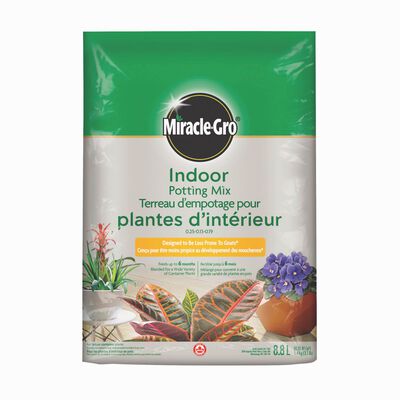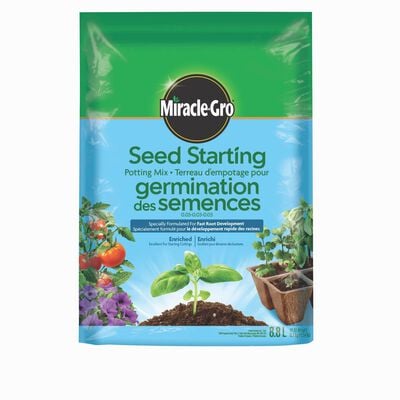
How to Grow African Violets
- Grow plants in bright and indirect light.
- Plant African violets in African violet pots filled with Miracle-Gro® Indoor Potting Mix of 8.8 liters.
- Water and feed with indoor plant food.
- Divide the mother plant into small plants when your African violet becomes large and crowded.
- Repot when plants develop a bare 'neck' between the leaves and the soil line.
African violets are common indoor plants as they reliably bloom and are easy to grow. The plants have fuzzy leaves with pink, purple, or white flowers in various shades. They thrive in low humidity and moderate temperatures in most home and office environments. With proper care, these plants can live and bloom for decades.
Where to grow African violets
African violets are strictly indoor plants in North America, largely because their leaves need to remain dry. Grow the plants in bright, indirect light for the best colors and blooms. A plant stand three feet from a west or south-facing window is an ideal location. Plants will still grow if placed right next to north or east-facing windows, but the leaves will be thin and stringy, and the plants will have less chance of flowering. If you don't have a good spot near a window, you can grow African violets under 40-watt fluorescent lights (or grow lights) suspended 12 to 15 inches above the plant.
How to plant African violets
African violets thrive in well-drained and slightly acidic soil. Miracle-Gro® Indoor Potting Mix of 8.8 liters is specially formulated to provide optimal growing conditions for indoor plants like African violets. For best results, plant African violets in African violet pots, which are small, self-watering containers made of ceramic or plastic and are 4 to 5 inches in size. Growing plants in these pots will provide the right amount of consistent moisture to the plants.
How to water African violets
The simplest way to ensure that you give African violets the right amount of water is to grow them in the self-watering African violet pots mentioned above. These pots have an upper part where the plant grows and a lower part (or reservoir) that retains water. Ceramic pots are usually glazed on the outside, but the bottom of the planting section is left unglazed so that water can easily flow from the reservoir. Plastic pots for African violets typically have a fibrous wick connecting the planting pot to the reservoir. Be sure to change the water every week.
If you don't grow the plants in African violet pots, water just enough to keep the soil as moist as a wrung-out sponge. Ensure to use room-temperature water and avoid leaving water on the leaves, as it can cause leaf spotting.
How to feed African violets
One month after planting, start feeding your African violets with indoor plant food. Add the food directly to the soil or mix it with water in your watering can. Be sure to follow the instructions on the label.
How to grow more African violets
Over time, African violets can become too large and start to outgrow their pots. Use leaf cuttings from these plants to propagate, or start, new African violet plants. Simply cut a leaf where it joins the plant stem and insert the cut end into a small container filled with Miracle-Gro® Seed Starting Mix 0.03-0.03-0.03. Keep the soil consistently moist. New leaves will sprout within a few weeks. Once the plants have 4 to 5 leaves, they can be replanted into African violet pots.
When to repot African violets
When the lower leaves of an African violet plant begin to die, the lower part of the stem may become bare (sometimes referred to as a 'neck'). Remove the plant from the pot, trim the bottom of the root ball, and repot the plant in the same container with Miracle-Gro® Indoor Potting Mix, burying the stem so that the lower part of the leaves is at the level of the pot's edge. Place the plant in a location with high humidity (or temporarily cover it with a plastic bag) for a week after planting to help alleviate the shock of having a portion of the root ball removed.
Ready to start growing African violets? Click on any of the product links above for more information, to purchase the product online, or to find a retailer near you.

